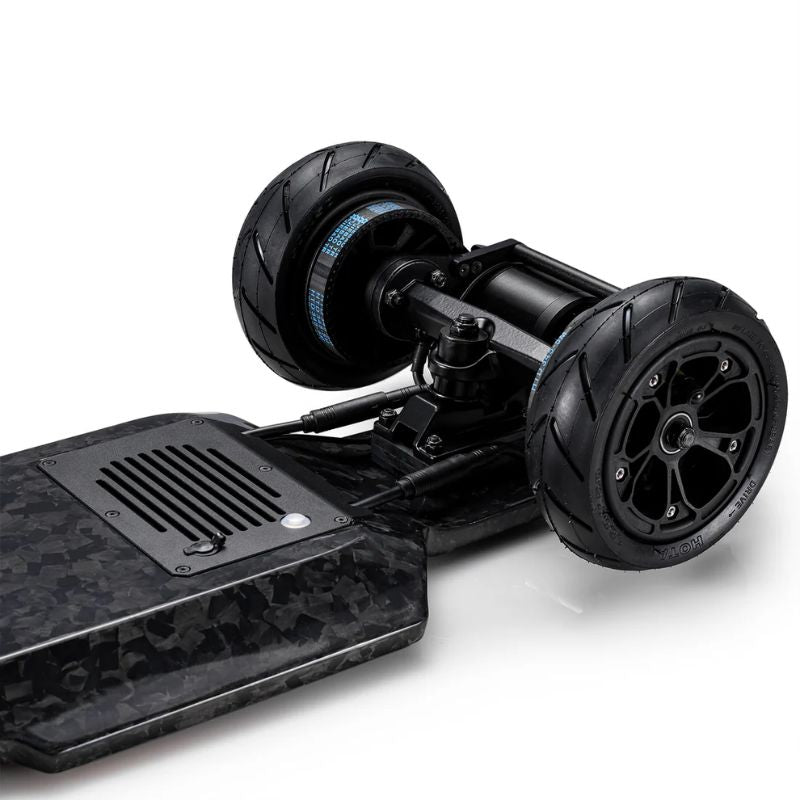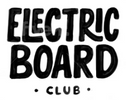
Hub Motor vs Belt Drive - Electric Skateboards (Which Is Better?)
Hub Drive vs. Belt Drive Electric Skateboards: A Detailed Comparison
Electric skateboarding is becoming increasingly popular, and choosing the right type of drive system is crucial for getting the best experience. Here’s an in-depth look at the differences between belt drive and hub drive electric skateboards, including their advantages and disadvantages, to help you make an informed decision.
Hub-Drive Electric Skateboards

How They Work: A hub drive motor is integrated directly into the wheel, meaning the motor itself is part of the wheel. This design eliminates the need for external gears or belts. The motor is wrapped in a layer of urethane rubber, which provides grip and reduces noise.
Advantages:
- Higher Top Speed: Hub motors can achieve higher speeds because there is no gear drive to multiply torque at the expense of speed. This makes them ideal for riders who prioritize speed.
- Quiet Operation: The urethane wrapping and lack of gears make hub motors significantly quieter. This allows for a more discreet ride, perfect for urban environments or campus commuting.
- Low Maintenance: With fewer moving parts, hub motors require less maintenance. There are no belts or gears to replace, which reduces long-term costs and makes the motor more water-resistant.
- Freewheeling Capability: Hub motors offer minimal friction when not powered, making them easier to push manually. This is particularly useful if the battery runs out, as the board can still be used like a traditional skateboard.
- Lightweight: Combining the motor and wheel into a single unit reduces the overall weight of the skateboard, making it easier to carry and maneuver.
Disadvantages:
- Lower Torque: Hub motors typically have less torque compared to belt-driven systems. This is because they cannot multiply torque through gears, making them less powerful on inclines and rough terrain.
- Wheel Replacement: Changing wheels on a hub-driven skateboard is more complex since the motor is part of the wheel. This limits the options for wheel customization and replacement.
- Heat Dissipation: Hub motors can overheat more easily due to their enclosed design. The urethane rubber sleeve insulates the motor, reducing its ability to dissipate heat effectively.
Belt-Drive Electric Skateboards

How They Work: Belt drive systems use an external motor connected to the wheels via a belt and gears. The motor is mounted separately from the wheels, typically on the trucks, and drives the wheels through a belt system.
Advantages:
- Higher Torque: Belt drives can multiply torque by changing the size of the gears. This provides more power for climbing hills and navigating rough terrain. The ability to adjust gear ratios allows for customization based on the rider’s needs.
- Wheel Options: Belt-driven boards offer more flexibility in wheel choices. Since the motor is separate from the wheels, you can easily swap out wheels for different types or sizes, enhancing the board’s versatility.
- Better Heat Dissipation: Externally mounted motors are exposed to air circulation, which helps dissipate heat more effectively. This reduces the risk of overheating and improves the motor’s performance and longevity.
Disadvantages:
- Noise: Belt drives are generally louder due to the exposed motor and belt. The noise can be noticeable, especially in quiet environments, which might be a drawback for some riders.
- Maintenance: Belts require regular replacement and are susceptible to damage from debris like dirt, sand, and pebbles. This adds to the maintenance cost and effort, as a snapped belt can leave you stranded.
- Manual Pushing: Belt-driven boards are harder to push manually when the battery is dead. The gear drive increases friction, making it difficult to use the board without power. This can be inconvenient if you run out of battery far from home.
Which is Better?
The choice between hub and belt drive electric skateboards depends on your specific needs and preferences:
- Speed and Quiet Operation: If you prioritize higher speeds, quieter rides, and low maintenance, a hub-driven board is a great choice. It’s ideal for flat terrains, urban commuting, and casual riding.
- Torque and Customization: If you need more torque for hills, prefer a variety of wheel options, and don’t mind a bit of noise and maintenance, a belt-driven board might be better suited for you. It’s perfect for riders who want power and flexibility.
Both systems have their unique benefits and drawbacks, so consider what features are most important to you before making your decision. Happy riding! 🛹
Feel free to reach out if you have any more questions or need help choosing the right board for you!

